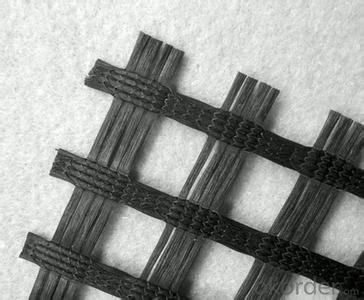- Understanding the Role of Geomembrane Liners in Waste Management
- Innovations in Geomembrane Liners for Water Management
- Geomembrane Liners: A Comprehensive Guide
- The Future of Geomembrane Liners in Civil Engineering
- Geomembrane Liners: Enhancing Landfill Stability
Manager:
WhatsApp:+86 177 0135 2670
Tel:+86 177 0135 2670
Email:marketing@okorder.com
Address:3rd Floor, No.2 Building, No.1 Sanlihe Road
The Durability and Longevity of HDPE Geomembranes
hdpe Geomembranes, also known as high-density polyethylene liners, are widely recognized for their exceptional durability and longevity in various applications. These synthetic materials are engineered to provide a waterproof barrier and are commonly used in landfills, reservoirs, canals, and other containment structures. But what makes HDPE geomembranes stand out from the rest? Let's dive into the fascinating world of these versatile liners and explore their remarkable properties that contribute to their long-lasting performance.

The Science Behind HDPE
HDPE is a type of plastic that is highly resistant to chemicals, UV radiation, and temperature extremes. It's made from polymers that are tightly bonded together, which gives it a high level of strength and flexibility. This molecular structure is what makes HDPE geomembranes so resilient and capable of withstanding the test of time.
Versatility in Use
One of the key advantages of HDPE geomembranes is their versatility. They can be used in a wide range of environments and conditions, from the harsh desert sun to the freezing arctic temperatures. This adaptability makes them an ideal choice for various industries, including construction, mining, and agriculture.
Resistance to Chemicals and UV Radiation
HDPE geomembranes are not just tough; they're also smart. They have a natural resistance to a wide variety of chemicals, which means they won't break down or degrade when exposed to most substances. This resistance is particularly important in applications where the liner will come into contact with potentially harmful chemicals.
Moreover, HDPE has a high resistance to UV radiation, which is crucial for outdoor applications. Sunlight can be harsh on materials, but HDPE geomembranes can take the heat, literally. They maintain their integrity and performance even under prolonged exposure to sunlight.
Temperature Tolerance
When it comes to temperature, HDPE geomembranes can handle the heat and the cold. They have a broad temperature range, from -60°C to 80°C, allowing them to be used in diverse climates without losing their structural integrity. This is a significant advantage for projects in regions with extreme weather conditions.
Longevity and Durability
The longevity of HDPE geomembranes is truly impressive. With proper installation and maintenance, these liners can last for decades, often outlasting the structures they are designed to protect. Their durability is a result of the high-quality materials and manufacturing processes used to create them.
Environmental Impact
While HDPE geomembranes are designed for long-term use, they are also environmentally friendly. They are made from non-toxic materials and can be recycled at the end of their life cycle, reducing their overall impact on the environment.
Installation and Maintenance
Proper installation is crucial for the longevity of HDPE geomembranes. A well-installed liner will have fewer leaks and a longer lifespan. Maintenance is also relatively simple, with regular inspections and minor repairs being the primary requirements to keep the geomembrane in top condition.
Case Studies and Real-World Applications
There are numerous case studies and real-world applications that showcase the effectiveness of HDPE geomembranes. From the construction of the Three Gorges Dam in China to the lining of the Sydney Olympic Park, these liners have proven their worth time and time again.
The Future of HDPE Geomembranes
As technology advances, so does the development of HDPE geomembranes. Researchers are continually working on improving their properties and finding new applications for these versatile materials. The future looks bright for HDPE geomembranes, with innovations on the horizon that will only enhance their durability and longevity.
In Conclusion
HDPE geomembranes are a testament to human ingenuity and the power of modern materials science. Their ability to withstand the elements, resist chemicals, and provide a reliable barrier for decades is truly remarkable. As we continue to push the boundaries of what is possible, HDPE geomembranes will undoubtedly play a significant role in shaping the world of tomorrow.
- Previous:HDPE Geomembranes: A Cost-Effective Solution for Pond Construction
- Next:HDPE Geomembranes for Containment and Leak Prevention
-
2024-12-05Geomembrane Liners: A Comprehensive Guide






